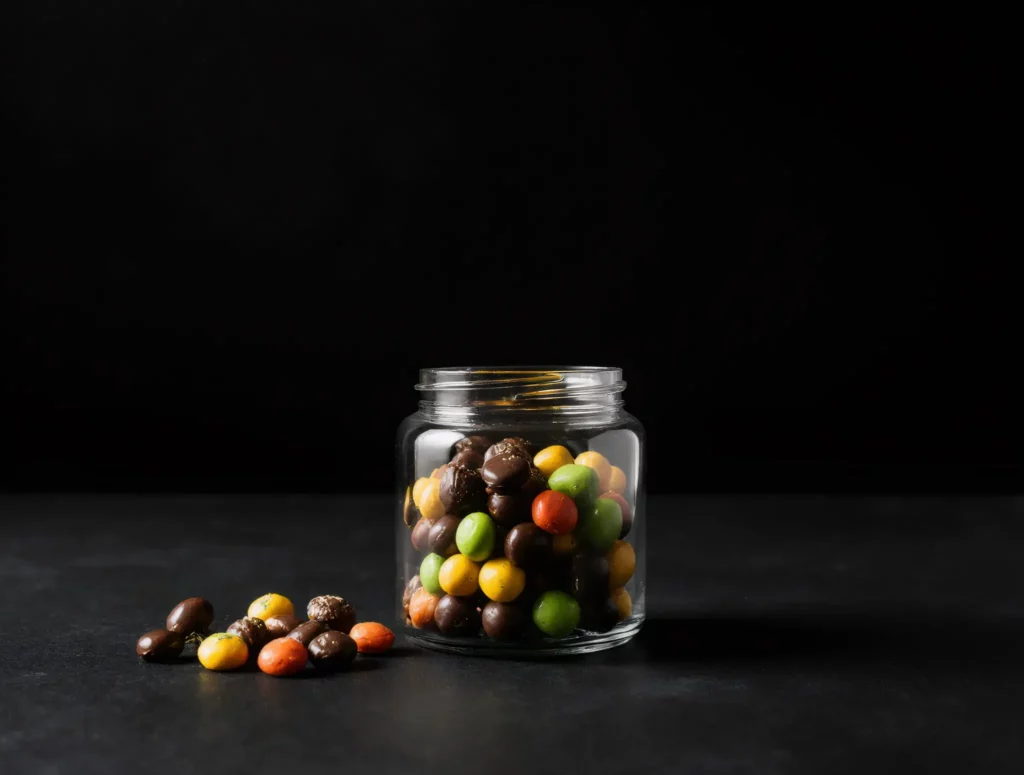You tell yourself it’s just one cookie. Then the whole pack disappears. Or maybe you find yourself elbow-deep in a bag of chips after a long day. It’s not lack of willpower; it’s your body and brain sending signals in the only language they know: cravings.
Cravings aren’t random. They’re data points from your internal systems—nutrition, hormones, and emotions—all trying to get your attention. Once you learn to translate what those signals really mean, you stop feeling guilty and start feeling in control.
Quick summary: Food cravings aren’t weakness; they’re your body’s feedback loop for stress, emotion, and nutrition balance. Here’s how to read them, respond wisely, and let FitChef personalize your way back to balance.
The Why: The Science Behind Cravings
Every craving starts with a trigger. It might be biological—low blood sugar, dehydration, or a micronutrient gap—or emotional, like stress or boredom. Either way, the brain uses the same system to motivate you: dopamine. When dopamine dips, your brain looks for a quick fix: sugar, salt, crunch—anything that promises reward.
Hunger hormones join the party. Ghrelin rises when you’re tired or under-fueled. Cortisol spikes when you’re stressed, making you crave fast comfort calories. Together, they create the perfect storm of “I deserve this.”
“According to FitChef data, users who skip balanced lunches are 42% more likely to log sweet snacks in the evening—proof that under-eating earlier triggers cravings later.”
Once you see cravings as signals instead of failures, you can start working with them instead of against them.
Tip: A craving is often your brain asking for energy, calm, or a change of state—not necessarily food. Pause before reacting and ask, “What am I really needing right now?”
The How: Decode the Messages
Every craving carries a clue. When you understand the message, you can feed the need—not the noise.
- Sweet cravings: Usually signal low blood sugar, poor sleep, or emotional fatigue. Add protein and fiber to breakfast and aim for steady meals to stabilize glucose.
- Salty cravings: Often mean mineral loss from stress or workouts. Rehydrate and include foods rich in potassium, magnesium, and electrolytes.
- Crunchy cravings: Linked to tension or frustration—you’re craving the act of release more than the flavor. Try crisp vegetables or roasted chickpeas for satisfying crunch.
- Comfort cravings: Triggered by stress and nostalgia. Build healthier comfort rituals: warm tea, protein cocoa, or a slow meal with music.
Note: Most cravings fade within fifteen minutes if you hydrate, move, or distract yourself. They’re signals, not commands.
FitChef’s Adaptive Nutrition Engine identifies your eating patterns automatically, spotting when low energy or macro imbalances predict cravings and adjusting your plan before they hit.
The What Now: Reprogram Your Craving Loop
Once you understand the “why,” you can retrain the loop. FitChef calls it the Pause → Pattern → Plan method—a practical way to turn craving chaos into clarity.
- Step 1 – Pause: Don’t react immediately. Check hunger, hydration, and mood.
- Step 2 – Pattern: Notice when cravings hit—time of day, stress level, skipped meals. Patterns reveal causes.
- Step 3 – Plan: Adjust proactively: more protein earlier, better sleep, balanced macros. FitChef can automate this cycle through personalized recommendations.
Over time, cravings become data—small, helpful cues that tell you what your body needs instead of what it wants.
Tip: The more consistent your nutrition rhythm, the fewer cravings you’ll have. Your body craves stability more than sweets.
Turn Cravings into Clarity
Cravings are your body’s way of asking for balance, not punishment. FitChef’s adaptive nutrition engine learns from your logged meals and patterns to fine-tune your plan, keeping your energy and appetite steady throughout the day.
Decode Your Cravings with FitChef — personalized meal plans that translate your body’s signals into smarter, balanced choices.
References
[1] Gibson EL. Emotional influences on food choice: sensory, physiological and psychological pathways. Physiology & Behavior. 2006; 89(1): 53-61.
View study.
[2] FitChef Data Insights, 2025 — analysis of user craving patterns and meal-timing correlations.




